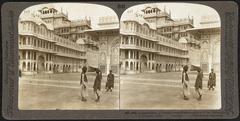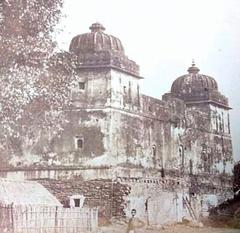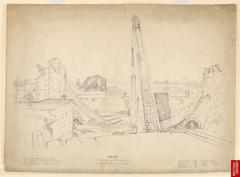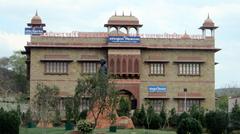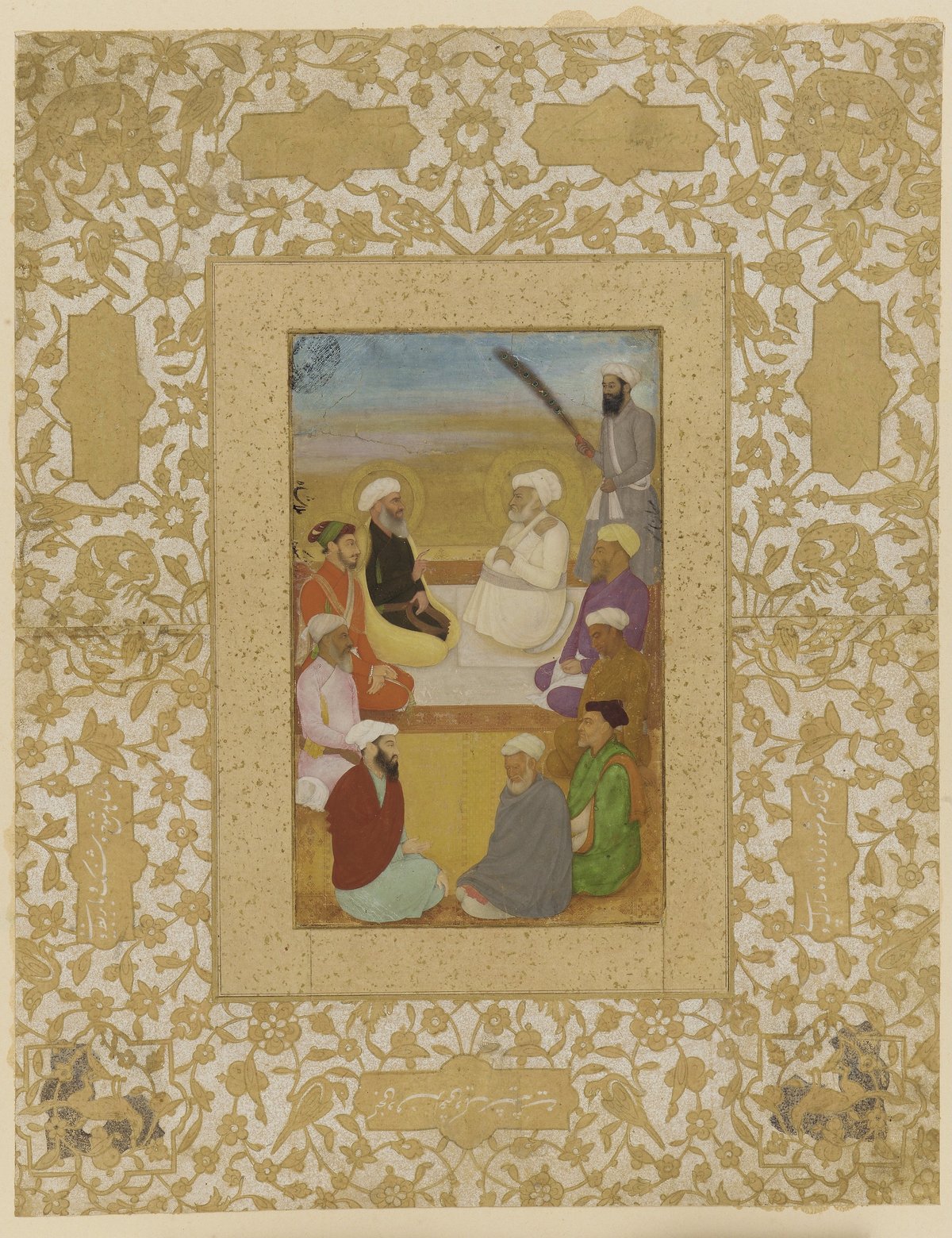
A Comprehensive Guide to Visiting Jaigarh Fort, Jaipur, India
Published Date: 17/07/2024
Introduction to Jaigarh Fort
Nestled atop the Cheel ka Teela (Hill of Eagles) in the Aravalli Range, Jaigarh Fort stands as a magnificent relic of Jaipur’s illustrious past. Known as the ‘Victory Fort,’ this formidable structure was built in 1726 by Maharaja Jai Singh II, the ruler of Amer, to protect the Amer Fort and house the royal treasury. The fort’s undefeated history and strategic location overlooking Amer Fort and Jaipur city underscore its importance as a military stronghold for the Kachwaha Rajput rulers (Jaigarh Fort - History, Visiting Hours, Tickets, and Travel Tips).
Jaigarh Fort, spanning an area of 3 kilometers, is a blend of Mughal and Rajput architectural styles, featuring massive sandstone walls, intricate carvings, and lush gardens. Its military might is showcased by the presence of the Jaivana Cannon, the largest cannon on wheels in the world. The fort is also shrouded in legends of hidden treasures, adding an air of mystery to its allure.
For visitors, Jaigarh Fort offers a journey through time with its well-preserved historical structures, panoramic views, and captivating tales. This guide provides comprehensive information on the fort’s history, architecture, visitor tips, and nearby attractions to ensure a memorable visit.
Table of Contents
- [History and Significance](#history-and-significancehistory-and-significance)
- [Construction and Patronage](#construction-and-patronageconstruction-and-patronage)
- [Architectural Marvels](#architectural-marvelsarchitectural-marvels)
- [The Fortifications](#the-fortificationsthe-fortifications)
- [Diwan-i-Aam (Hall of Public Audience)](#diwan-i-aam-hall-of-public-audiencediwan-i-aam-hall-of-public-audience)
- [Laxmi Pol (Gate of Goddess Lakshmi)](#laxmi-pol-gate-of-goddess-lakshmilaxmi-pol-gate-of-goddess-lakshmi)
- [Lalit Mandir](#lalit-mandirlalit-mandir)
- [Villas and Gardens](#villas-and-gardensvillas-and-gardens)
- [Military Might](#military-mightmilitary-might)
- [Jaivana Cannon](#jaivana-cannonjaivana-cannon)
- [Legends and Lore](#legends-and-lorelegends-and-lore)
- [Visitor Information](#visitor-informationvisitor-information)
- [Visiting Hours](#visiting-hoursvisiting-hours)
- [Tickets](#ticketstickets)
- [Travel Tips](#travel-tipstravel-tips)
- [Travel Tips and Nearby Attractions](#travel-tips-and-nearby-attractionstravel-tips-and-nearby-attractions)
- [Best Time to Visit](#best-time-to-visitbest-time-to-visit)
- [How to Get There](#how-to-get-therehow-to-get-there)
- [Guided Tours](#guided-toursguided-tours)
- [Nearby Attractions](#nearby-attractionsnearby-attractions)
- [Photography Tips](#photography-tipsphotography-tips)
- [Preservation and Present Day](#preservation-and-present-daypreservation-and-present-day)
- [FAQ](#faqfaq)
- [Call to Action](#call-to-actioncall-to-action)
History and Significance
Perched atop the Cheel ka Teela (Hill of Eagles) in the Aravalli Range, Jaigarh Fort stands as a formidable testament to the power and grandeur of Jaipur’s Kachwaha Rajput rulers. Often called the “Victory Fort,” Jaigarh boasts an undefeated history, never falling to enemy forces. Its strategic location, overlooking the majestic Amer Fort and the sprawling Jaipur city below, underscores its historical significance as a crucial military stronghold.
Construction and Patronage
The fort’s construction is attributed to Jai Singh II, the formidable ruler of Amer, in 1726. While he laid the foundation, the fort saw additions and modifications under subsequent rulers, notably Sawai Jai Singh II, the founder of Jaipur. Built primarily to protect Amer Fort and house its royal treasury, Jaigarh’s robust structure reflects a blend of Mughal and Rajput architectural styles.
Architectural Marvels
Jaigarh Fort is a sprawling complex of palaces, gardens, temples, and impressive military structures, each telling a tale of its glorious past.
The Fortifications
Encompassing an area of 3 km, the fort’s massive sandstone walls, punctuated by imposing gateways and watchtowers, stand as a testament to its impregnable defense. The fort’s strategic design incorporated secret passages, water reservoirs, and granaries, enabling it to withstand prolonged sieges.
Diwan-i-Aam (Hall of Public Audience)
This grand hall, with its open-air design and intricate carvings, served as a platform for the rulers to address their subjects and hold court.
Laxmi Pol (Gate of Goddess Lakshmi)
This beautifully adorned gate, dedicated to the Goddess of wealth and prosperity, marked the entrance to the inner sanctum of the fort, signifying the importance of divine blessings for the rulers.
Lalit Mandir
This palace, known for its delicate latticework and stunning views of the surrounding landscape, served as a private retreat for the royal family.
Villas and Gardens
Interspersed within the fort’s complex are lush gardens and elegant villas, offering a glimpse into the luxurious lifestyle of the royals.
Military Might
Jaigarh Fort’s reputation as a center of military power is deeply ingrained in its history. The fort housed a formidable arsenal, including cannons, muskets, and other weapons, showcasing the advanced military technology of the time.
Jaivana Cannon
This colossal cannon, built in 1720, is believed to be the largest cannon on wheels in the world. With a 20-feet barrel and the capacity to fire a 50 kg iron ball over a distance of 35 km, the Jaivana Cannon instilled fear in the hearts of enemies and served as a symbol of Jaipur’s military dominance.
Legends and Lore
Jaigarh Fort is shrouded in intriguing legends, particularly tales of hidden treasures. One popular legend claims that the fort housed a vast treasure trove belonging to Raja Man Singh I, one of Emperor Akbar’s most trusted generals. While the veracity of these tales remains unconfirmed, they add an air of mystery and intrigue to the fort’s allure.
Visitor Information
For those planning a visit to Jaigarh Fort, here is some essential information.
Visiting Hours
The fort is open to visitors daily from 9 - 00 AM to 4 - 30 PM.
Tickets
Entry tickets are priced at INR 85 for Indian citizens and INR 200 for foreign tourists. Special discounts are available for students and senior citizens.
Travel Tips and Nearby Attractions
Best Time to Visit
The ideal time to explore Jaigarh Fort is during the cooler months, from October to March.
How to Get There
The fort is easily accessible by road from Jaipur city. Visitors can hire a taxi or take a local bus.
Guided Tours
Guided tours are available and recommended for those interested in an in-depth historical perspective.
Nearby Attractions
While visiting Jaigarh Fort, don’t miss the nearby Amer Fort, Nahargarh Fort, and the Jaigarh Museum.
Photography Tips
Capture stunning views of the Aravalli Range and Jaipur city from the fort’s numerous vantage points. Early morning or late afternoon light offers the best photographic opportunities.
Preservation and Present Day
Today, Jaigarh Fort, under the purview of the Archaeological Survey of India, stands as a well-preserved heritage monument. The fort’s historical significance, architectural brilliance, and captivating legends continue to draw visitors from across the globe. A visit to Jaigarh Fort is not just a journey through time but also an opportunity to delve into the rich cultural tapestry of Rajasthan.
FAQ
What are the visiting hours for Jaigarh Fort?
The fort is open from 9 - 00 AM to 4 - 30 PM daily.
How much are tickets for Jaigarh Fort?
Tickets are priced at INR 85 for Indian citizens and INR 200 for foreign tourists.
Are there guided tours available at Jaigarh Fort?
Yes, guided tours are available and recommended for a comprehensive understanding of the fort’s history and significance.
Call to Action
Explore more historical sites in Jaipur by downloading our mobile app Audiala. Follow us on social media for updates and travel tips, and check out our other related posts for more insights into Rajasthan’s rich heritage.
Conclusion
Jaigarh Fort remains a testament to the architectural brilliance and military prowess of the Rajput era. Its undefeated history, strategic design, and blend of Mughal and Rajput styles make it a significant cultural and historical site in Jaipur. Visitors are drawn to its massive fortifications, intricate palaces, and the legendary Jaivana Cannon, all of which provide a glimpse into the opulent and powerful past of the Kachwaha Rajput rulers.
The fort’s preservation under the Archaeological Survey of India ensures that its historical significance and architectural marvels continue to be appreciated by future generations. Whether you are an architecture enthusiast, history buff, or simply a curious traveler, a visit to Jaigarh Fort offers an enriching experience, allowing you to delve into the rich cultural tapestry of Rajasthan (Jaigarh Fort Visitor Guide - Hours, Tickets, and Essential Tips for a Memorable Visit).
To make the most of your visit, consider exploring nearby attractions such as Amer Fort and Nahargarh Fort, and take advantage of guided tours for a deeper understanding of the fort’s history. By respecting the heritage and following the provided travel tips, you can ensure a rewarding and memorable journey through one of Jaipur’s most iconic historical sites.
References
- Jaigarh Fort - History, Visiting Hours, Tickets, and Travel Tips, 2024, Rajasthan Tourism https://www.tourism.rajasthan.gov.in/
- Jaigarh Fort - Exploring Architectural Marvels, Visiting Hours, and Tickets, 2024, Rajasthan Tourism https://www.tourism.rajasthan.gov.in/
- Jaigarh Fort Visitor Guide - Hours, Tickets, and Essential Tips for a Memorable Visit, 2024, Rajasthan Tourism https://www.tourism.rajasthan.gov.in/


